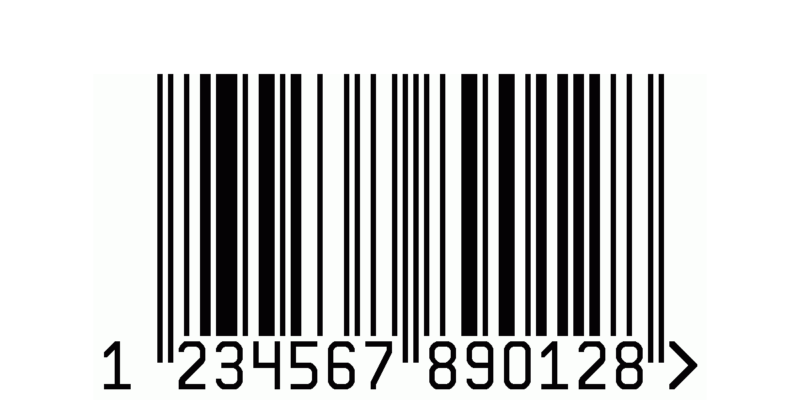
In the vast world of commerce, efficient and accurate product identification is crucial for businesses to streamline their operations and effectively manage their inventory. The European Article Number (EAN) barcode system has emerged as a widely adopted standard for product identification. In this article, we will delve into the concept of EAN, exploring its significance, structure, and applications across industries.
Understanding EAN:
The European Article Number (EAN) is a barcode symbology system utilized for unique product identification on a global scale. EAN barcodes consist of a series of parallel lines and spaces that encode important information, including the country code, manufacturer code, product code, and a checksum digit. This combination of digits forms a unique identifier for each product, ensuring accurate data capture and efficient inventory management. If you’re curious about what is EAN, it’s essentially a standardized system for labeling and tracking products worldwide.
Structure and Components of EAN:
An EAN barcode consists of four main components: the EAN prefix, country code, manufacturer code, and product code. The EAN prefix represents a three-digit number that identifies the country or region where the barcode was issued. The country code further refines the origin to a specific country within the designated region.
The manufacturer code is a unique identifier assigned to each manufacturer or brand owner. This code distinguishes products from different companies within the same industry. The product code, also known as the item reference or item number, represents a specific product within the manufacturer’s range.
In addition, an EAN barcode incorporates a checksum digit. This digit is calculated using a mathematical formula applied to the preceding digits. It serves as a validation mechanism, ensuring the accuracy and integrity of the barcode data.
Importance of EAN in Retail:
The EAN barcode system has revolutionized the retail industry by providing an efficient and standardized method of product identification. EAN barcodes offer numerous benefits, including streamlined inventory management, accurate point-of-sale transactions, and improved supply chain operations.
EAN barcodes enable retailers to automate inventory management processes by providing a standardized method to track stock levels, monitor sales, and replenish products. Scanning EAN barcodes allows retailers to access crucial product information, such as pricing, descriptions, and stock availability, leading to faster and error-free transactions, enhanced customer satisfaction, and reduced manual data entry errors.
Moreover, EAN plays a pivotal role in supply chain operations. By incorporating EAN barcodes into product packaging, manufacturers, distributors, and retailers can efficiently track products throughout the supply chain. This enhanced visibility facilitates optimized logistics, improves order fulfillment, and reduces costs associated with inventory management.
EAN and Global Trade:
The EAN barcode system has significantly impacted global trade by providing a universal method of product identification and data exchange. EAN barcodes enable seamless communication and interoperability between trading partners worldwide.
EAN barcodes play a crucial role in customs and international trade regulations. They facilitate accurate tracking and verification of products, ensuring compliance with quality standards, safety regulations, and customs requirements. Scanning EAN barcodes allows customs authorities to verify the authenticity and origin of products, promoting transparency and reducing the risks associated with counterfeiting.
Furthermore, EAN barcodes enhance supply chain security and visibility. They enable businesses to mitigate risks related to product recalls, theft, and unauthorized distribution. The traceability provided by EAN barcodes allows for efficient recalls, ensuring consumer safety and protecting brand reputation.
Evolving Trends in EAN:
As technology continues to advance, the EAN barcode system evolves alongside emerging trends. The integration of EAN barcodes with mobile applications has transformed the way businesses and consumers interact with barcoded products. Mobile barcode scanning apps enable consumers to access product information, compare prices, and make informed purchasing decisions. This integration has opened up new possibilities for inventory management, consumer engagement, and supply chain optimization.
Additionally, the integration of EAN barcodes with other technologies such as Radio Frequency Identification (RFID) and Internet of Things (IoT) has expanded the capabilities of the EAN system. These integrations enable real-time tracking, remote monitoring, and intelligent data analytics, further enhancing the efficiency and effectiveness of product identification and management.
Conclusion:
The European Article Number (EAN) barcode system has become a cornerstone of efficient product identification and management across industries. Its standardized structure and universal recognition enable businesses to streamline inventory management, enhance point-of-sale transactions, and optimize supply chain operations.
As technology continues to advance, the EAN barcode system is poised to adapt to emerging trends such as mobile applications and IoT integration. Embracing the power of EAN allows businesses to stay competitive, improve operational efficiency, and deliver exceptional customer experiences in the ever-evolving landscape of global commerce.










